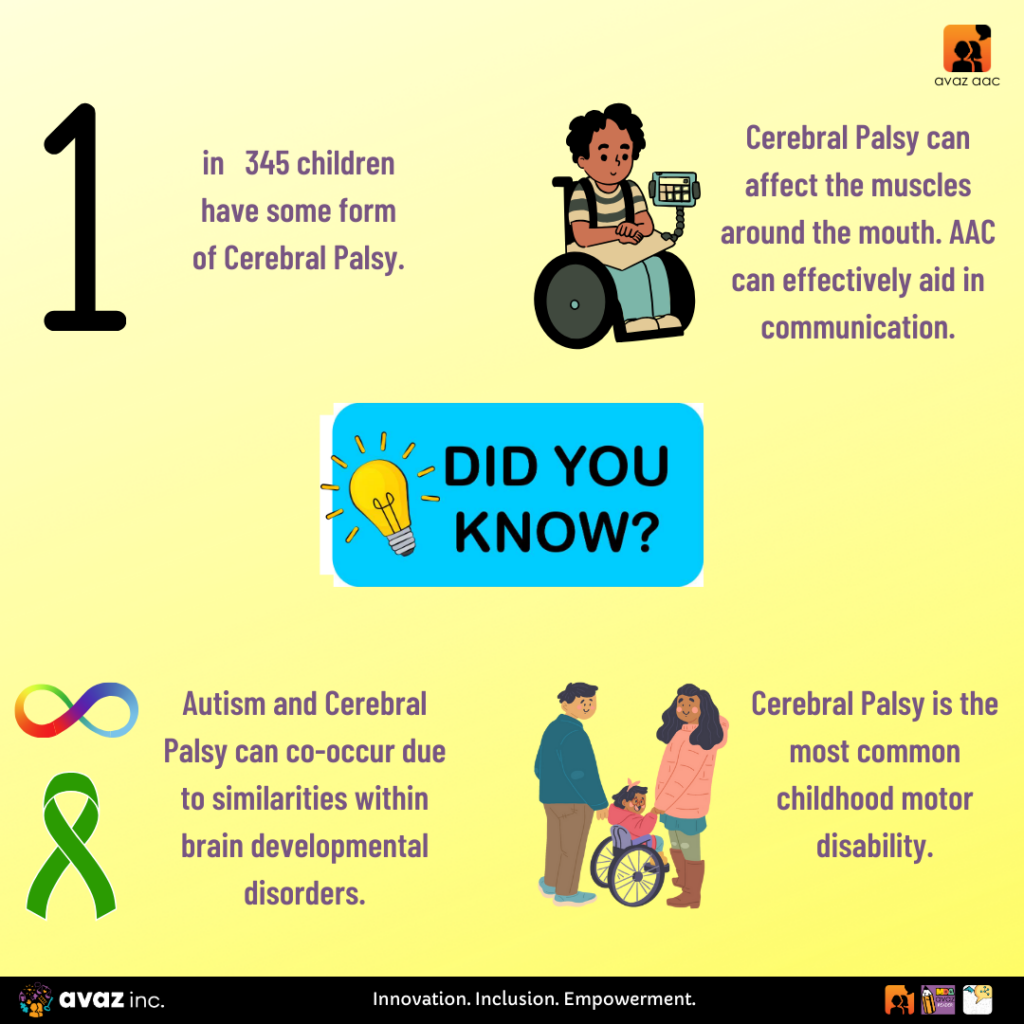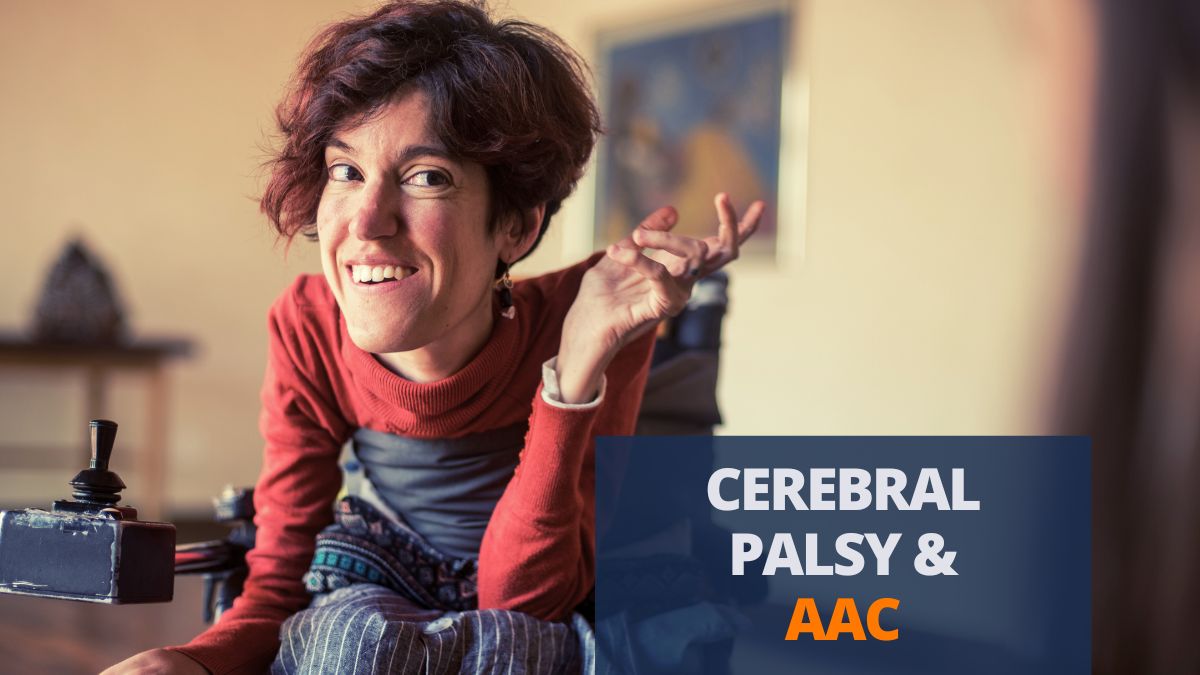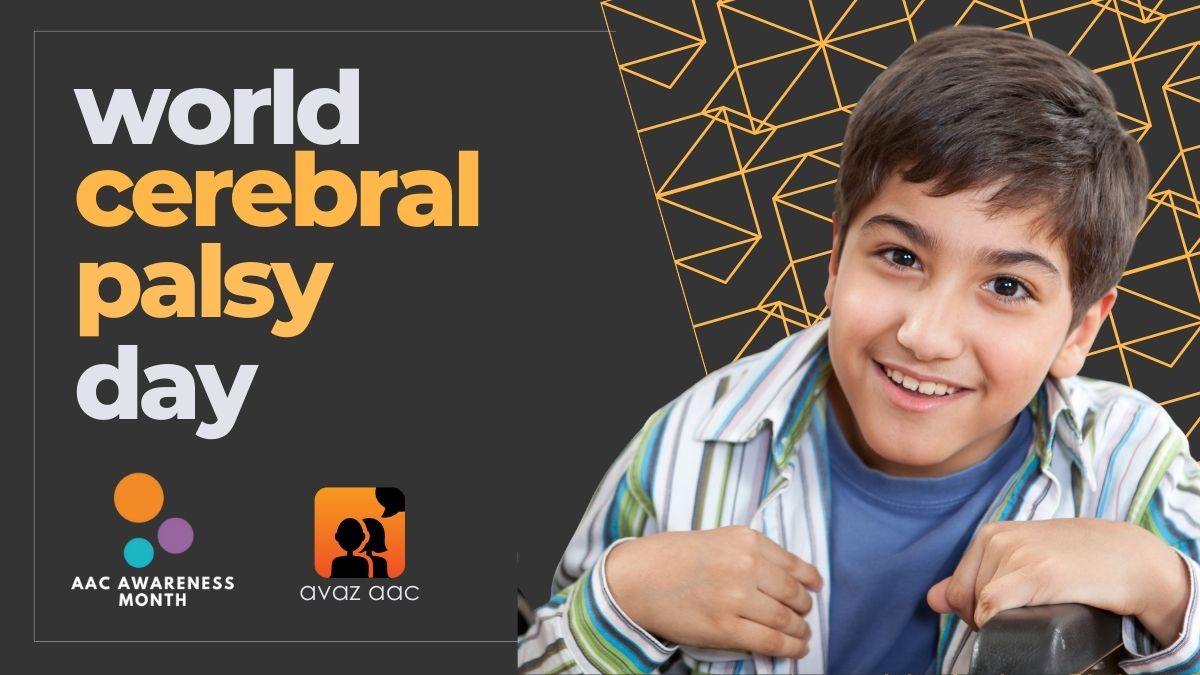Cerebral Palsy is a brain disorder that causes motor disability. Read this post to learn about causes, diagnosis, and how assistive technology for Cerebral Palsy can help overcome difficulties with communication and movement.
What is Cerebral Palsy?
Cerebral Palsy (CP) is a group of neurological disorders that affect movement, balance, and posture of individuals. The term ‘Cerebral’ refers to the brain and ‘Palsy’ refers to impairment of motion. CP is the most common condition causing motor impairments in children. People with Cerebral Palsy can also experience communication challenges along with difficulties in thinking, feeling, and learning.
Causes of Cerebral Palsy
Cerebral Palsy is caused due to abnormal development of the brain or damage to parts of the brain. These abnormalities or damage may occur during pregnancy, childbirth, or after birth.
In most cases, the children have Congenital CP, which means that the brain damage happened before or during birth. CP caused due to brain damage that happens more than 28 days after birth is called Acquired CP.


Congenital CP Risk Factors
The following risk factors are reasons that can increase the chances of CP. Presence of risk factors does not mean that a child will have CP.
- Low Birth Weight
Studies have found that the prevalence of CP was higher among infants of low birth weight compared to those of normal birth weight.
- Premature Birth
According to researchers, babies born before the 37th week of pregnancy have a greater chance of having CP.
- Multiple Birth Pregnancy
Multiple births such as the birth of twins or triplets can increase the chance of CP. The increase in risk may be because children born from multiple pregnancy tend to be born early or at low birth weight.
- Assisted Conception Methods
Studies have shown that children born after in vitro fertilization were more likely to have CP. This can be attributed to the fact that that they were more likely to be born from a multiple pregnancy or prematurely.
- Infection During Pregnancy
Infection of the placental membranes (chorioamnionitis), blood infection in the mother or fever during labor can increase the risk of CP in children. Chickenpox, Rubella, and Cytomegalovirus are some of the viral infections linked to CP.
Acquired CP Risk Factors
The risk factors for Acquired CP are:
- Meningitis or encephalitis during infancy.
- Brain injuries due to motor vehicle crashes or falls,
- Cerebrovascular accidents such as stroke
- Birth defects of the central nervous system
Diagnosis of Cerebral Palsy
Diagnosis of Cerebral Palsy generally happens during the first or second year after birth. But if the child has mild symptoms, the diagnosis can be difficult and doesn’t happen until the child is older. Early diagnosis ensures that the child receives the necessary support. Therefore, it is important to be aware of the common signs of CP.
Doctors generally track movement goals in a child from birth to five years. These goals include rolling over, sitting up, standing, and walking. Delay in reaching these milestones is an early sign of Cerebral Palsy. It is worth noting that many children without CP also can have some of these signs. So, it is better to consult a medical professional if you have concerns.
Types of Cerebral Palsy
The four main types of CP are:
- Spastic Cerebral Palsy
This is the most common type of CP affecting about 80% of people with CP. People with spastic CP have increased muscle tone which results in muscle stiffness. The stiffness may affect only one side of a person’s body, only the legs, or all four limbs, the trunk, and the face. People with spastic CP can have other developmental disabilities such as intellectual disability or problems with vision, hearing, or speech.
- Dyskinetic Cerebral Palsy
Difficulties with controlling the movement of hands, arms, feet, and legs are seen in people with Dyskinetic CP. Dyskinetic CP can also affect the face and tongue of the individual.
- Ataxic Cerebral Palsy
Ataxic CP is characterized by problems with balance and coordination. People with this condition can walk unsteadily. They also can have trouble controlling their hands when reaching for something.
- Mixed Cerebral Palsy
Spastic-dyskinetic CP is the most common type of mixed CP. Those with mixed CP have symptoms of more than one type of CP.
Cerebral Palsy Treatment
The common types of treatment for CP are:
- Physical Therapy
Physical therapy involves exercises and activities that can maintain or improve muscle strength, balance, and movement. The child learns skills such as sitting, walking, or using a wheelchair. Additionally, they also learn to do everyday activities such as dressing and going to school as part of occupational therapy.
- Speech and Language Therapy.
The child learns to speak more clearly. They also learn new ways to communicate, such as by using sign language or an AAC system.
- Assistive Technology for Cerebral Palsy
These include braces, splints, wheelchairs, rolling walkers, and powered scooters, Velcro-fastened shoes, and crutches. Communication apps and devices can also help children with CP in their social interactions.
- Medication
Medications can help in relaxing stiff or overactive muscles and reduce involuntary movement.
- Surgery
A child with severe symptoms may need surgery to lengthen stiff, tightly contracted muscles.
These treatments help people with CP move better, thereby improving their lives. Equipping them with an AAC system enhances their communication skills and consequently boosts their self-esteem. As Dipak Ghosh, Disability Rights Activist, has shown us, people with CP can defy all odds and live purposeful lives with a little help from assistive technology.


